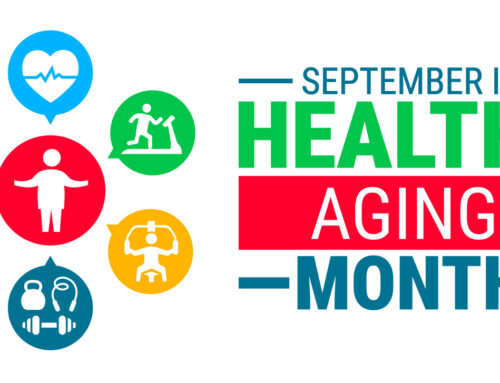When are we going to cure cancer? For anyone who has suffered from breast cancer or has seen a loved one deal with the dreaded disease, the answer can’t come soon enough. Fortunately, although there is no cure yet, there is very promising research leading to new treatment options that are achieving higher success rates. In our blog this week, FirstLantic is highlighting some of the important work that is taking place. As a company made up of caring individuals, we want to support the pink fight in any way we can.
Radical surgery is not always the answer
It wasn’t that long ago that a woman with breast cancer was advised to immediately have a radical mastectomy. As Jacqueline Jeruss, M.D., Ph.D., director of the Breast Care Center at the University of Michigan Rogel Cancer Center states, “We’ve come to understand that radical surgical treatment is not universally beneficial.” Jeruss goes on to say, “We want to offer patients the best treatment possible, tailored to their disease. We aim to identify a surgical plan that removes the cancer while sparing the patient the potentially avoidable and unnecessary morbidities of surgical care,” A radical mastectomy (as many of you may know) is a procedure to remove the breast, the underlying chest muscle and the lymph nodes. However, in the 1960s a randomized clinical trial showed that a simple mastectomy that left the chest muscle intact resulted in similar survival rates. It was the beginning of realizing that sometimes less is more. Over time, research has allowed surgeons to scale back treatment and many have found that a lumpectomy followed by radiation can be just as effective as a mastectomy for certain patients. When the axillary lymph nodes are left intact, it avoids the possibility of serious infections and extreme swelling. Unfortunately, in some cases, a mastectomy may be the only answer. However, according to the Mayo Clinic, “It is important to understand that having a mastectomy instead of breast-conserving surgery plus radiation only lowers your risk of developing a second breast cancer in the same breast. It does not lower the chance of the cancer coming back in other parts of the body.” So, the bottom line is that you should do your research first and see several specialists before making a final decision.
Targeted radiation
Radiation treatment has come a long way in terms of being able to target the problem more specifically and reduce the possible side effects. For example, hypofractionated radiation therapy. Not only does it reduce the treatment time from six weeks to as little as three weeks, it also can reduce the side effects. In some cases, patients have been able to cut treatment down even further to one week by taking advantage of a treatment in which radiation is given only to the part of the breast that had the tumor, rather than the entire breast. This is called accelerated partial breast irradiation after lumpectomy (APBI) and has shown survival and recurrence rates similar to whole-breast radiation after lumpectomy. Newer technology also allows radiation oncologists to plan therapy that targets the breast but avoids the heart. “We can outline areas at risk slice by slice on a CT scan, and then we can outline what we want to miss, like the heart,” says Reshma Jagsi, M.D., D.Phil., professor and deputy chair of radiation oncology at University of Michigan.
Progress with Immunotherapy
Immunotherapy has shown great promise in treating many types of cancer, however, it has not been applied as successfully at targeting breast cancer. That will hopefully change soon. There have been tremendous breakthroughs in treating melanoma, kidney cancer, lung cancer and prostate cancer and finally there are drugs approved by the FDA that treat breast cancer as well.
• Tecentriq (chemical name: atezolizumab) is used as a first treatment for locally advanced or metastatic triple-negative, PD-L1-positive breast cancer that cannot be treated with surgery.
The next three “immune targeted therapies” are used to treat HER2-positive breast cancer by targeting the HER2 receptors on breast cancer cells. In addition to blocking these receptors, these medicines can also help fight breast cancer by alerting the immune system to destroy cancer cells.
• Herceptin (chemical name: trastuzumab)
• Perjeta (chemical name: pertuzumab)
• Kadcyla (chemical name: T-DM1 or ado-trastuzumab emtansine)
And while the research into treating breast cancer with immunotherapy is ongoing, clinical trials are showing real progress. To find out more, there are many helpful websites such as Facing Our Risk, which is specifically for people who are BRCA carriers. Also, the Breast Cancer Research Foundation, Susan B. Komen, and The Cancer Research Institute (CRI) which has an Immunotherapy Clinical Trial Finder that patients can use to determine trials they might be eligible to participate in. CRI also hosts an Immunotherapy Patient Summit series, with several events each year.
Summary
The bottom line is that knowledge brings power. While there are many professionals working tirelessly to find the cure for breast cancer, individuals need to educate themselves as well. There are so many ways to get information and it is important to know your options and be prepared to ask the right questions in order to seek the right treatment. At Firstlantic, (best blogs for seniors) our thoughts (and actions) are with all of those who have dealt with this horrible disease as well as with the families and friends that support them. Fortunately, there are ways for every one of us to help with more than just thoughts. With October being Breast Cancer Awareness month, let’s all do our part to support pink!
If you or your loved one is diagnosed and cannot afford treatment, visit breastcancer.org to find out more about financial assistance.
 AVAILABLE 24 HOURS A DAY/7 DAYS A WEEK
AVAILABLE 24 HOURS A DAY/7 DAYS A WEEK Careers
Careers







